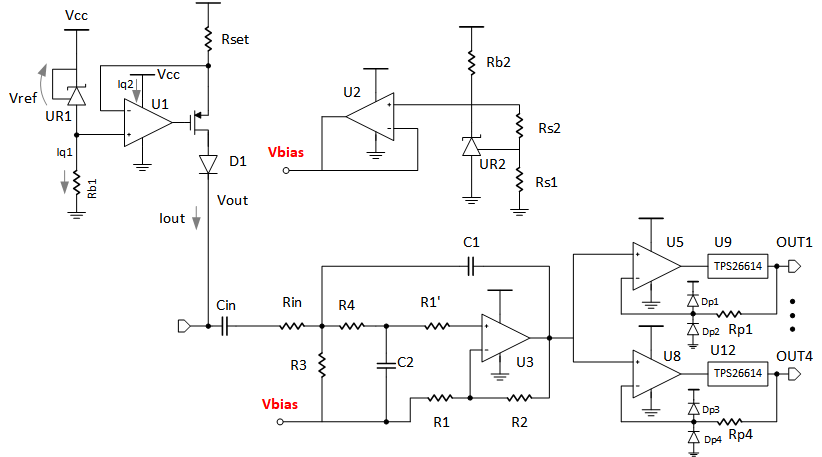Other Parts Discussed in Thread: OPA2320, DAC5311, THS4551, TVS3301, TVS2201, TVS2701, INA851, TVS2700
Hi,
We are looking to create a new design to interface industry standard IEPE sensor. We have taken reference from TIDA-010249 reference design of TI.
The design has requirements as below:
1) IEPE Sensor specs - 100mv/g sensitivity, 10-12V Bias voltage, 0.5mA to 8mA current
2) ADC is not required. Rather, the sensor signal is simply to be buffered into multiple outputs with levels (bias and signal) same as the input signal.
2) Assume that the fixed current source, HPF, and buffer section can be utilized as such from TIDA-010249.
3) Wire break and short circuit checks needed on both input and output.
4) Need EMI and surge protection on the inputs and outputs.
Can you suggest a suitable LPF+output driver stage for this after the OPA2320 stage?
Regards
Gaurav


